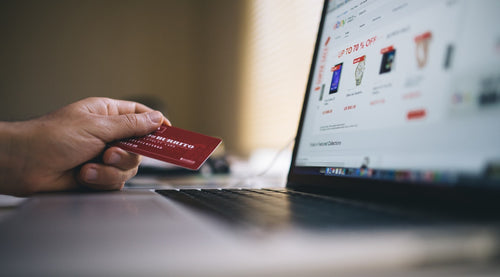The Pumpkin Spice Phenomenon: From Pie Spice to Cultural Obsession
From lattes to dog treats, pumpkin spice has taken over fall. But how did this flavor become an autumn obsession? The rise of pumpkin spice from a simple pie spice to a cultural phenomenon is a testament to the power of nostalgia, marketing, and the human craving for comfort and seasonal traditions. This beloved flavor has transcended its humble origins to influence various industries and consumer behaviors, becoming an integral part of the fall experience for millions.
The Birth of a Seasonal Sensation
Historical Roots
The story of pumpkin spice begins in 1934 when McCormick & Company created the original pumpkin pie spice blend. This mixture, designed to help home bakers enhance their pumpkin pies, contained a carefully crafted combination of cinnamon, ginger, nutmeg, and allspice. Little did they know that this simple blend would eventually become the cornerstone of a multi-million dollar industry.
The Starbucks Revolution
While pumpkin pie spice had been around for decades, it wasn't until 2003 that it truly exploded into popular culture. This was the year Starbucks introduced the now-iconic Pumpkin Spice Latte (PSL). The beverage, which combined the comforting flavors of fall with the convenience of a takeaway coffee, quickly became a seasonal favorite. Its success laid the groundwork for the pumpkin spice craze that was to follow.
The Modern Pumpkin Spice Landscape
A Cultural Icon
Today, pumpkin spice has achieved a status that few flavors can claim. It has become deeply embedded in the collective experience of fall, creating an emotional connection that brands eagerly capitalize on. As Dr. Matt Johnson, a professor at Hult International Business School, explains,
"The flavor and scent [of pumpkin spice] have become inextricably tied to memories of fall, holidays and comforting traditions, creating an emotional connection that brands capitalize on"(2024).
Seasonal Exclusivity Driving Demand
One of the key factors behind pumpkin spice's enduring popularity is its limited availability. By restricting these products to the fall season, companies create a sense of urgency and exclusivity. This scarcity effect drives demand and makes pumpkin spice products feel special and worth anticipating.
The Science Behind the Spice
Key Ingredients and Flavor Profile
The typical pumpkin spice blend consists of cinnamon, ginger, nutmeg, and allspice. Interestingly, despite its name, most pumpkin spice products contain no actual pumpkin. Instead, it's the combination of these warm spices that creates the comforting flavor associated with fall.
The Psychology of Pumpkin Spice
The popularity of pumpkin spice goes beyond just taste. It taps into deep psychological and emotional responses. Dr. Johnson notes,
"This combination of nostalgia and sensory gratification is why people are so enthusiastic about fall flavors despite the temperatures"(2024). The aroma and taste of pumpkin spice can trigger memories of cozy autumn days, family gatherings, and holiday celebrations, creating a powerful emotional connection.
Market Dominance: By the Numbers
The pumpkin spice market has seen remarkable growth in recent years:
- Sales have increased by about 47% in the last five years
- The 2021-22 season alone saw $236 million in pumpkin spice product sales
- Total pumpkin product sales exceeded $600 million in 2018, up from $500 million in 2015
These figures underscore the significant economic impact of this seasonal flavor trend.
Consumer Behavior and Preferences
Consumer enthusiasm for pumpkin spice remains strong:
- 66% of Americans consume 1-3 pumpkin spice products weekly during autumn
- Nearly half of consumers prefer pumpkin spice over chocolate in fall
This data, from a survey by Spice Islands, demonstrates the deep integration of pumpkin spice into fall consumption habits.
Riding the Pumpkin Spice Wave: Industry Strategies
Early Bird Gets the Worm
Brands are increasingly launching their pumpkin spice offerings earlier each year. For instance, Krispy Kreme launched its fall menu, featuring pumpkin spice-flavored doughnuts and coffee beverages, as early as August 12 in response to fan demand. This strategy capitalizes on consumers' eagerness for fall flavors, even before the official start of the season.
Diversification of Products
The pumpkin spice flavor has expanded far beyond coffee and baked goods. Today, you can find pumpkin spice in everything from breakfast cereals and protein bars to pet foods and even personal care products. This diversification allows brands to capture different market segments and keep the trend fresh and exciting.
Premium Pricing Strategies
Consumers have shown a willingness to pay more for pumpkin spice products. On average, there's an 8.8% "pumpkin spice tax" across various items. This premium pricing strategy allows companies to boost profits while reinforcing the perception of these products as special seasonal treats.
The Future of Pumpkin Spice
Trends and Projections
As we look to the future, several trends are emerging in the pumpkin spice market:
- Earlier Launches: Expect to see pumpkin spice products hitting shelves even earlier in the year.
- Continued Product Innovation: Brands will likely experiment with new and unexpected pumpkin spice applications.
- Focus on Quality: As the market becomes more saturated, companies may differentiate themselves through higher quality ingredients and more authentic flavor profiles.
- Global Expansion: While primarily a North American phenomenon, pumpkin spice may start to gain traction in other markets.
Challenges and Controversies
Overhype vs. Genuine Enthusiasm
Critics argue that pumpkin spice is overhyped and overmarketed. However, sales figures and consumer surveys suggest that genuine enthusiasm remains strong. The challenge for brands is to maintain this enthusiasm without oversaturating the market.
Balancing Scarcity and Availability
The limited-time availability of pumpkin spice products is a key driver of their appeal. However, as products launch earlier each year, there's a risk of diluting this scarcity effect. Brands must carefully balance meeting consumer demand with maintaining the special, seasonal nature of these offerings.
DIY Pumpkin Spice: Bringing the Flavor Home
For those who want to enjoy pumpkin spice beyond store-bought products, creating your own blend at home is simple and rewarding.
Homemade Pumpkin Spice Blend Recipe
Homemade Pumpkin Spice Blend
Ingredients:
- 4 tablespoons ground cinnamon
- 2 tablespoons ground ginger
- 1 tablespoon ground nutmeg
- 1 tablespoon ground allspice
- 1 teaspoon ground cloves (optional)
Instructions:
- Mix all ingredients in a small bowl until well combined.
- Store in an airtight container in a cool, dry place for up to 6 months.
This homemade blend can be used in various recipes, from lattes to baked goods, allowing you to control the intensity and quality of the pumpkin spice flavor.
Pumpkin Spice FAQ: Addressing Common Curiosities
Is pumpkin spice addictive?
While not technically addictive in the medical sense, the combination of sugar, fat, and aromatic compounds in many pumpkin spice products can create a pleasurable sensory experience that people crave.
How does pumpkin spice affect our mood?
The scent and taste of pumpkin spice can trigger nostalgic memories and feelings of comfort, potentially boosting mood and reducing stress. As Megan Baumler, Director for Nutrition and Dietetics at St. Catherine University, notes,
"It's hard to say goodbye to summer. But, if we can latch onto something, it makes it easier to transition"(2019).
Are there any health benefits to consuming pumpkin spice?
While pumpkin spice itself doesn't provide significant health benefits, some of its component spices, like cinnamon and ginger, have been associated with anti-inflammatory and antioxidant properties. However, many commercial pumpkin spice products are high in sugar and calories, so moderation is key.
Ethical Considerations in the Pumpkin Spice Industry
As the pumpkin spice trend continues to grow, it's important to consider the ethical implications of its production and marketing:
Sustainability in Ingredient Sourcing
The demand for spices used in pumpkin spice blends has increased dramatically. This raises questions about sustainable farming practices and fair trade in spice-producing regions.
Responsible Marketing
With the intense consumer enthusiasm for pumpkin spice, there's a responsibility for brands to market these products ethically, avoiding excessive promotion that could lead to overconsumption of high-calorie, sugary foods and beverages.
Conclusion: The Enduring Appeal of Pumpkin Spice
The journey of pumpkin spice from a simple pie spice to a cultural phenomenon is a fascinating study in marketing, psychology, and consumer behavior. Its ability to evoke nostalgia, comfort, and excitement has made it an integral part of the fall season for millions of people.
As we look to the future, it's clear that pumpkin spice will continue to play a significant role in seasonal consumer culture. While trends may come and go, the emotional connection and sensory experience offered by pumpkin spice suggest it will remain a beloved fall tradition for years to come.
Whether you're a pumpkin spice enthusiast or a skeptic, there's no denying the impact this flavor has had on our cultural landscape. As we sip our lattes and indulge in pumpkin-spiced treats, we're not just consuming a flavor – we're participating in a shared cultural experience that marks the changing of seasons and the comfort of familiar traditions.




































































